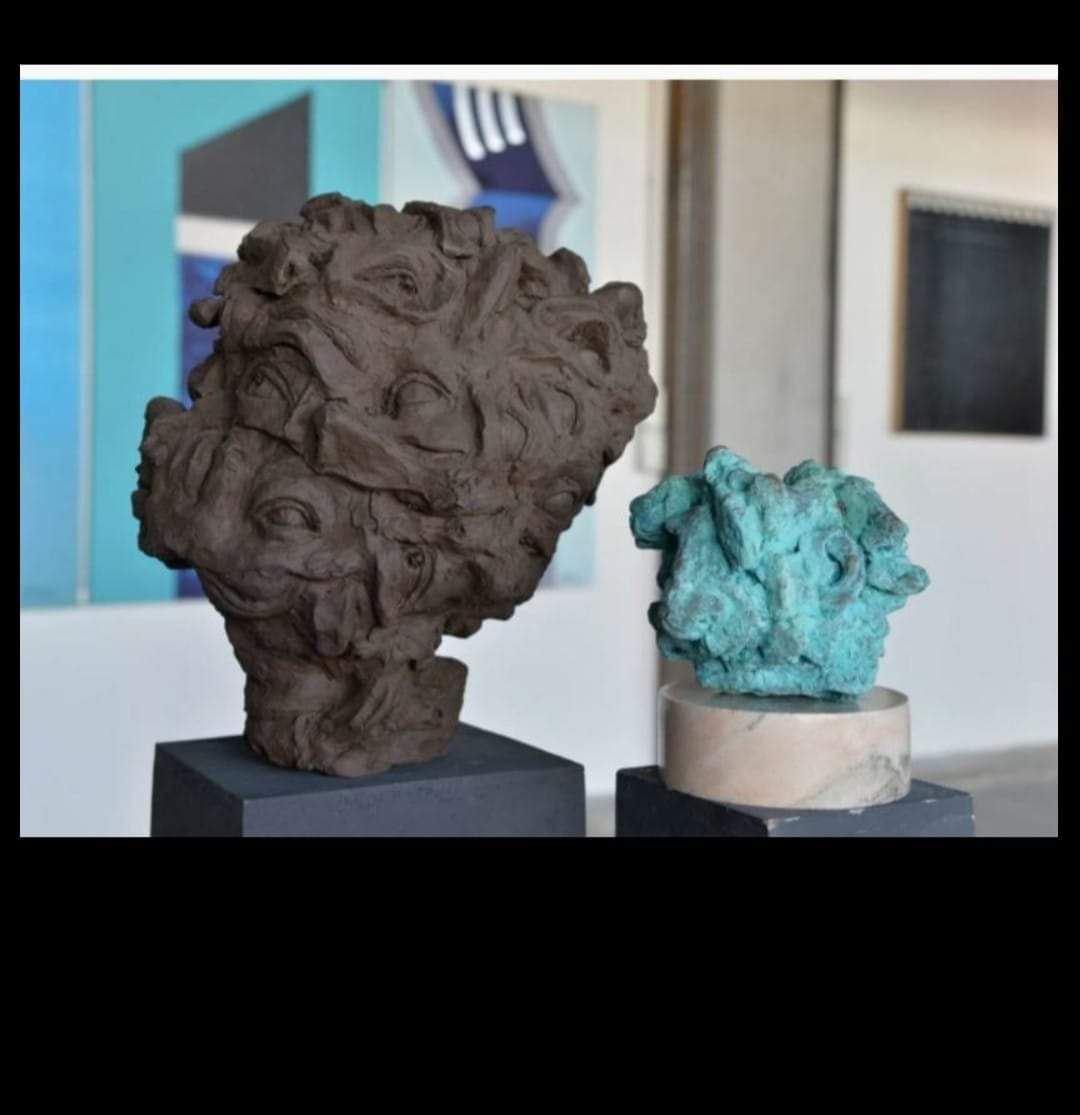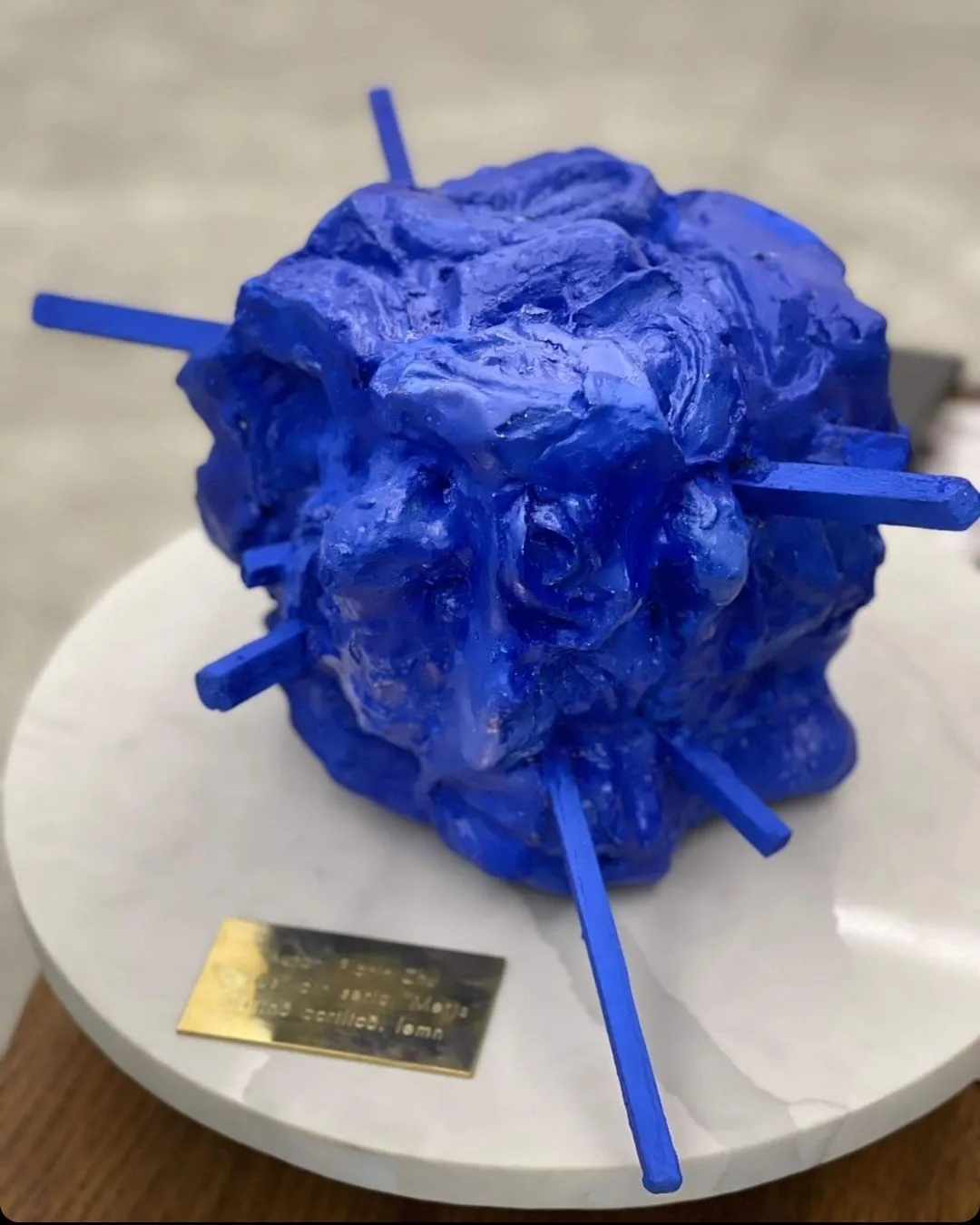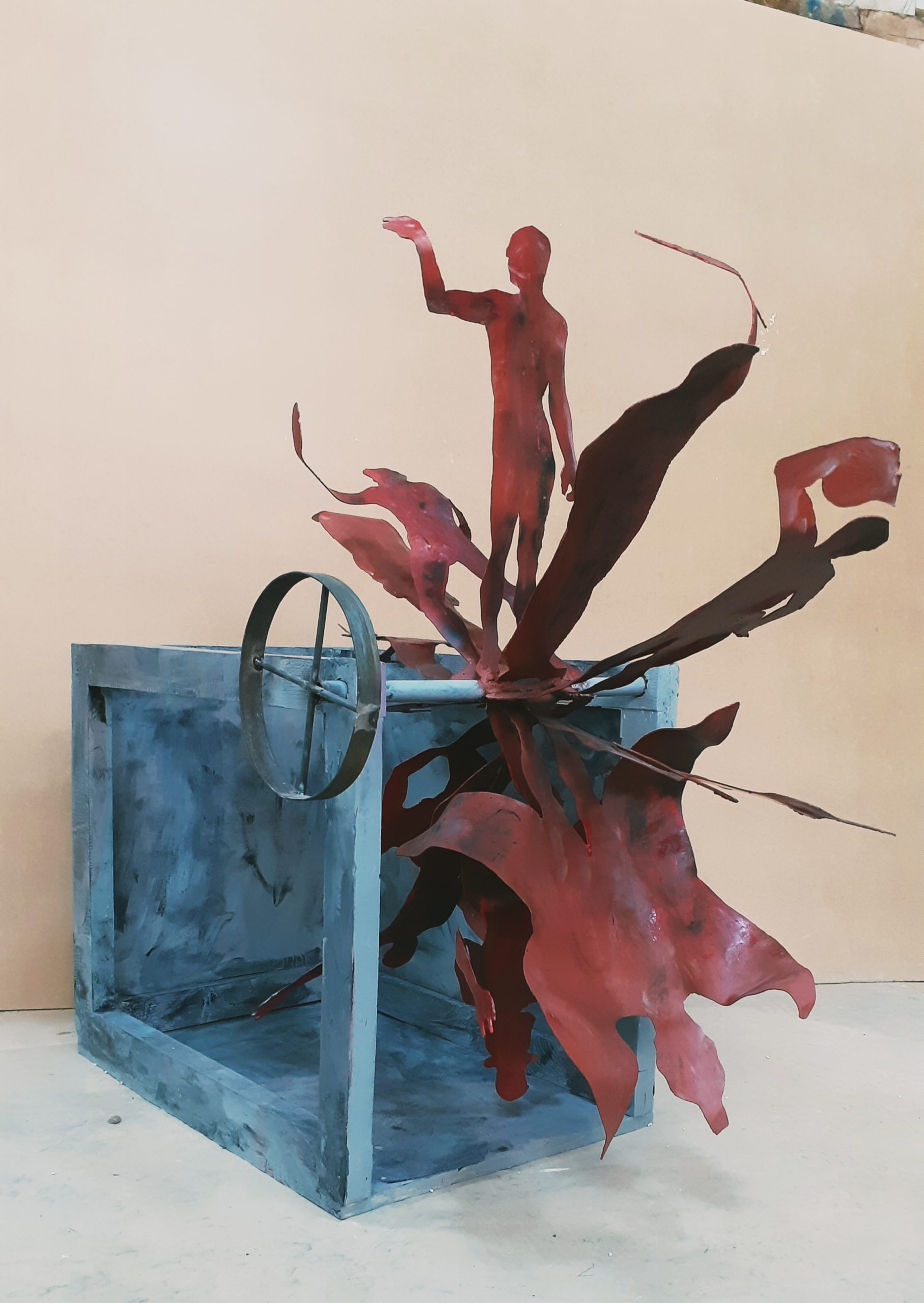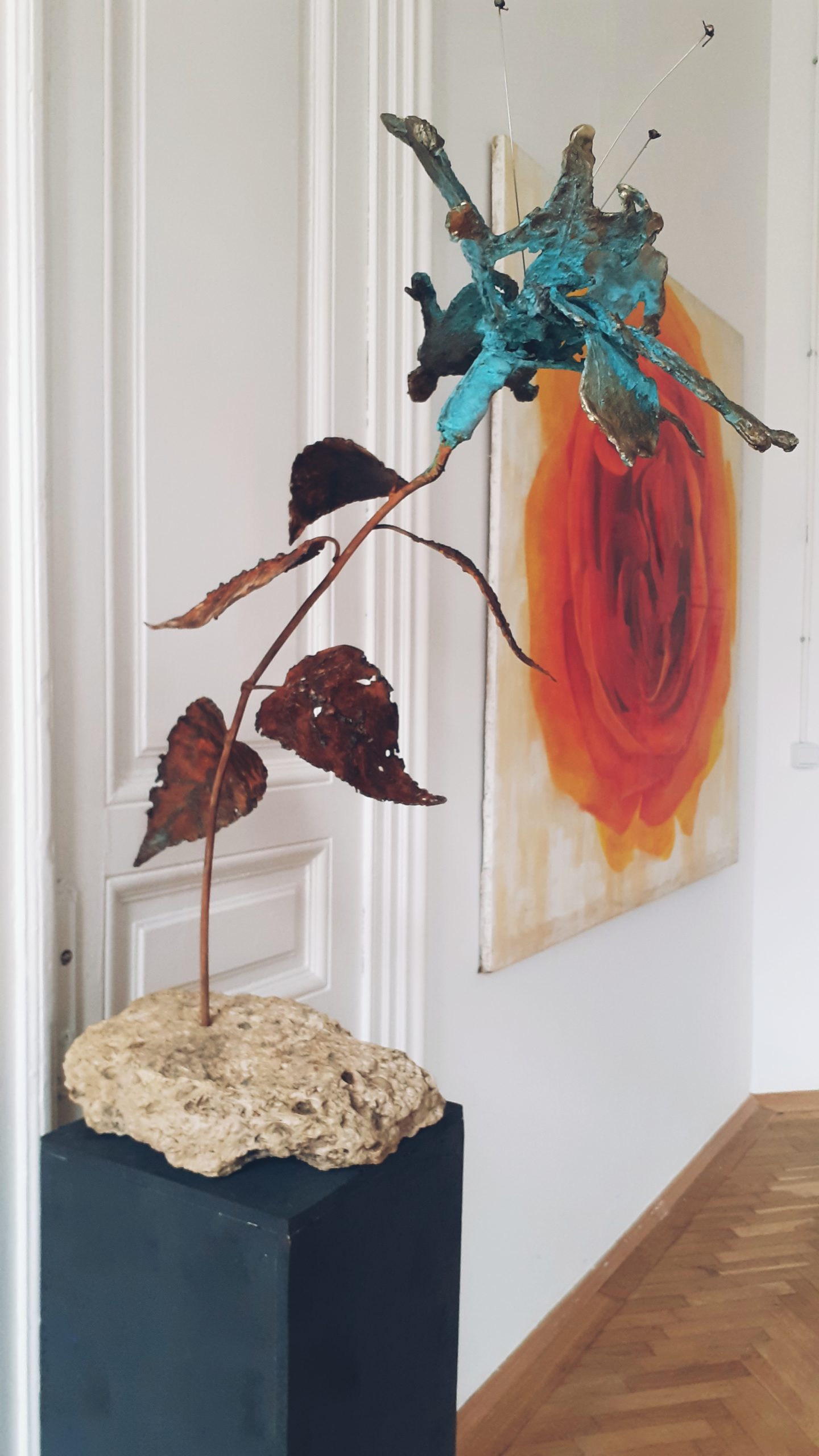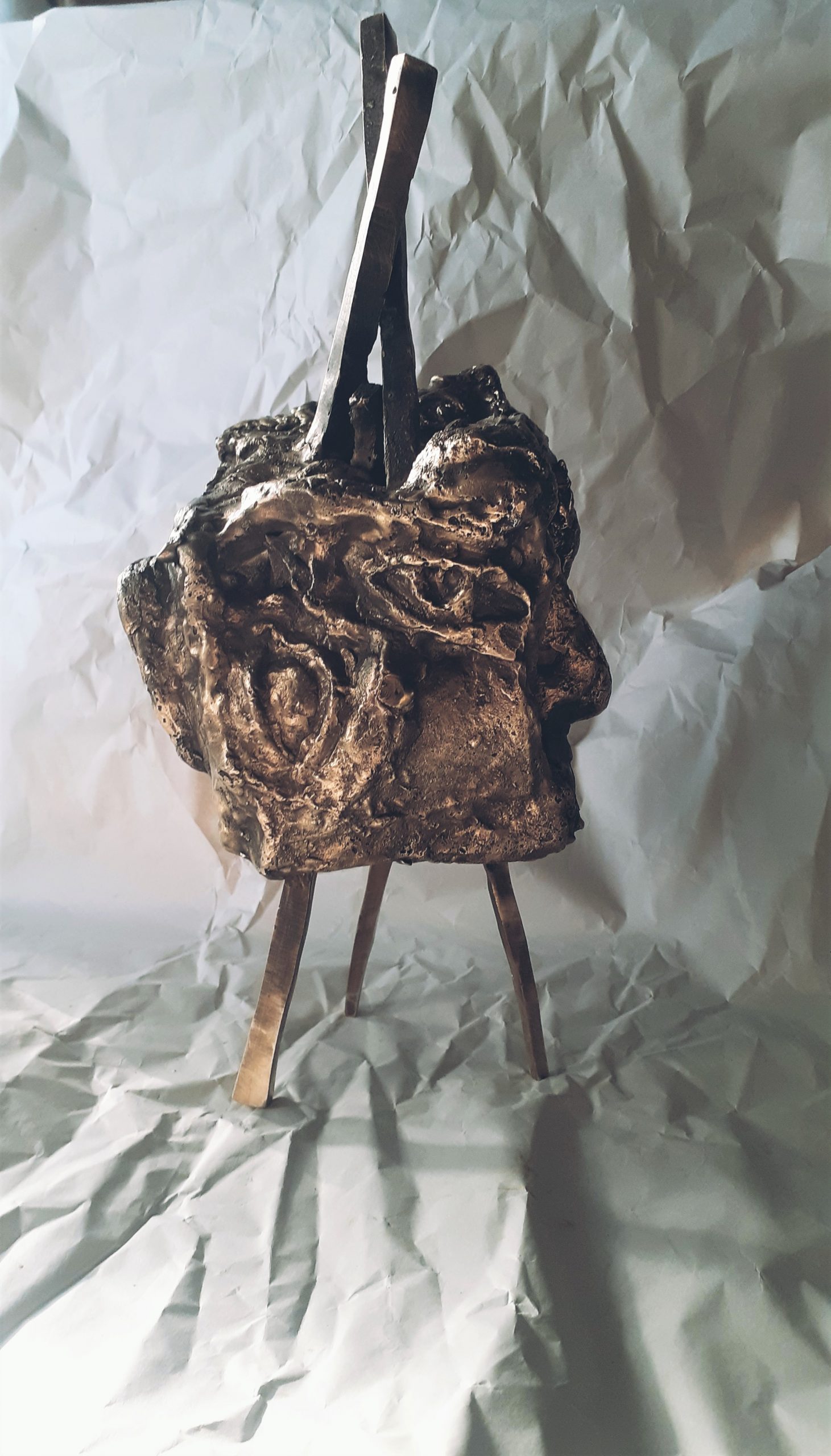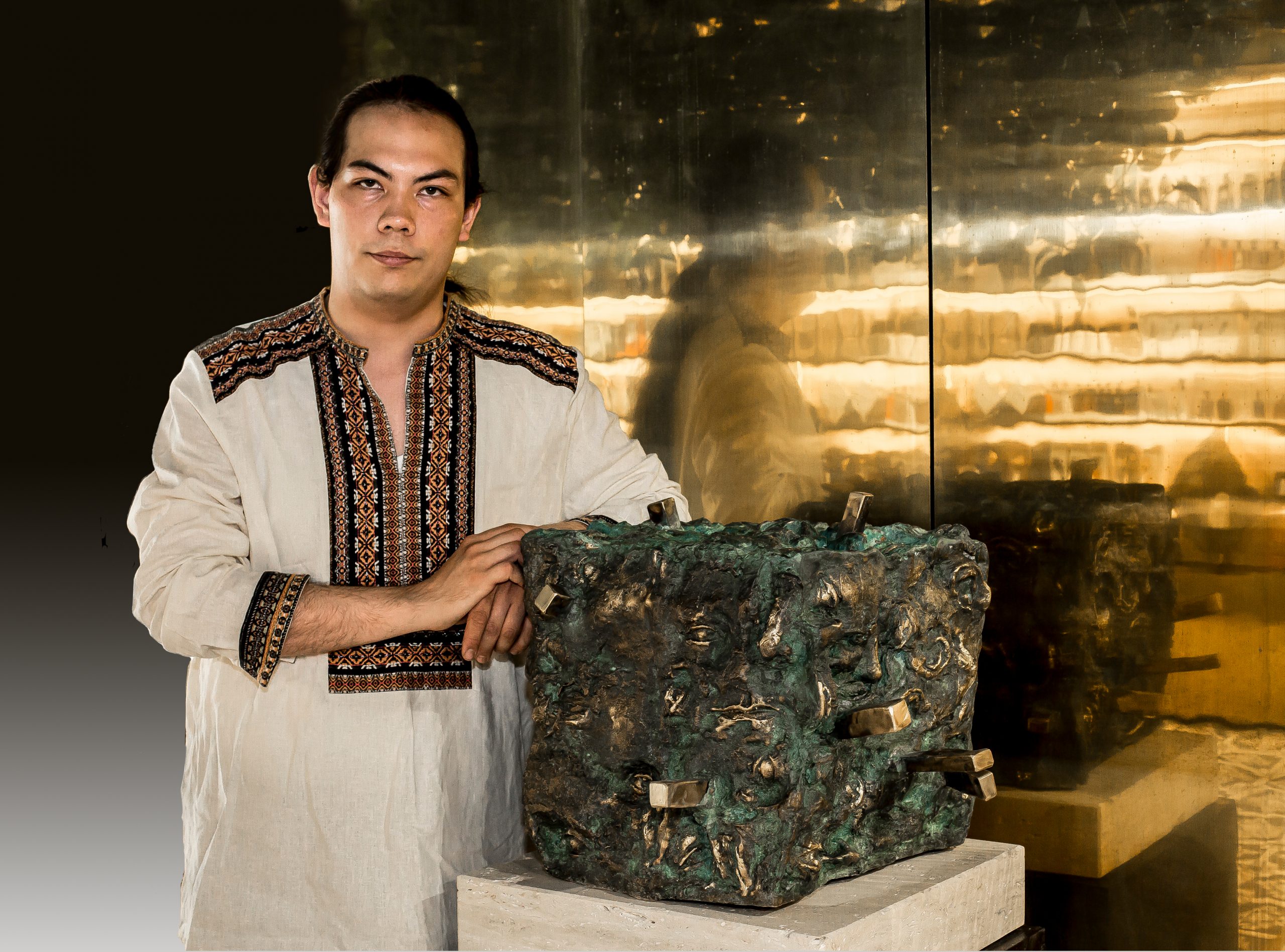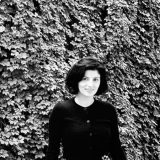Florin Zhu (b. 1997) is a visual artist. He studied sculpture at the National University of Arts Bucharest, under the guidance of professor Aurel Vlad.
Florin Zhu is part of the generation of young artists who enjoy visibility on the local art scene. He has participated in numerous group exhibitions, and his works have already been included in important contemporary art auctions.
The latest exhibitions include: “Flowers and People”, Contemporary Hair Space, 2022, “The New Sculpture Today. Beyond the Canon”, District 1 City Hall, 2021, “Diploma”, The Institute, 2021, “Tètè-a-Tètè IV, Transforming fear into coexistence”, BRD Residency, Scene 9, 2020, “The Small Sculpture Salon and the Trainee/ Simeza Gallery/ Title Simeza Gallery”, 2020, Juventus Competition Exhibition, “Culture of the Fragment or Dislocation of the Gaze”, Interart Triade Foundation, Timisoara, 2019 (where he won the second prize), “Heterogenous”, Docuart space, Hallucinarium Gallery, 2019.
When did you feel that your purpose was to be an artist?
I have loved sculpture and modeling since I know myself. As a child, I wanted to excel in modeling and to reproduce as faithfully as possible the animals and objects that aroused my curiosity… Over time, the feelings were amplified and matured, and towards the end of the eighth grade, I understood that my path in life must be a common one with that of art.
What does art mean to you?
Art, especially sculpture, is a way of life and work. It is a part of who I am, it is a little composition of my soul.
Please tell me about your artistic practice?
My fascination with sculpture has been with me since I was a few years old, and plasticine meant something magical to me that helped me model Tom, my cat. Years later, near the kiln of burning, calcination, where the bronze forms are calcined, I felt that the essence of the art of sculpture had entered my blood. From the day I saw the final burning of a work, I synthesized in those moments a universe of ideas, values, and attitudes. Then I realized that sculpture does not servilely reproduce forms, but interprets them, expressing emotional and educational messages.
That was the beginning when I set out and sought to express in my work the symbolism and harmony manifested in the composition of the human body. Artistic practice….I would summarize it like this… creativity and practice in my case are combined and associated with a quiet and reserved behavior. My parents don’t even know when I’m working on something. I prefer to make my plans after days of thinking and get to work when I feel like my ideas are ripe and good.
The artistic practice is covered by the smell of resins, or of clay and metal, from morning to evening and ends with the satisfaction of the satisfied collector or, as the case may be, of the artistic ego in me. Yes, when the bronze piece comes out of the furnace perfect and without cracks, I experience genuine feelings of fulfillment and it ends with the satisfaction I feel from the public and people who believe in my potential and follow and support my artistic path.

What comes first in your work? What do you focus on?
Traditionalism prevails in my works… in everything I do I like to keep some of the traditional even being hard pressed by the currents of modern art whose principles we see pretty much everywhere.
My artistic vision is irretrievably drawn to international literature and culture (the pantheon of Hindu deities, the African mask, the terracotta soldier, etc.) and I emphasize the awareness of the propagandistic valences of archaic monuments and works, of the representation of the symbols of humanity’s past. In this sense, the motifs of traditional international culture are found in several works from the Circle of Life.
To what extent does the current social order focused on production, consumption, profit, and success influence your artistic practice?
I am convinced that the artist also needs entrepreneurial skills, initiative, and commitment in what he does. To resist and somehow get out of the difficult beginning, I understand that my spirit of initiative and my creative spirit must somehow collaborate and become the basic objective of what I do. Keeping them under control and harmonizing them with cost and consumption form a unitary whole that does not negatively influence artistic practice. However, the business side remains in the background. Each work is carefully crafted, contains a piece of me, and the selling price is much lower compared to the work done, the quality of execution, and the materials used, but I wish I could support myself from art in my development process in this field.
Can we consider art whatever an artist does or says? What makes something a work of art?
Two very, very good questions!
Not everything an artist says and does can be considered to be art, just as a dedicated artist is reluctant to be taken as a yardstick by others… at least for a while, right?
The general public is the judge of the artist. He captures and reacts positively or negatively to the emotions, and feelings and to what the subject of the work looks like. We can say that the public can raise work to the level of art…
I think the traditional way and the combination of basic elements – line, shape, color, texture, and space turn something into a work of art. Without proper perspective, without the right details, and the play of lights and shadows created, you cannot realize the art and delight the spirit.
How is sculpture perceived and consumed (today) by contemporary audiences?
I think that expressionist-contemporary art dominates all the fine arts including sculpture, but most contemporary art consumers are impressed not necessarily because they would like and understand it, but only to be among civilization, at least that is what they think… This is a theory, of course…
The contemporary sculpture also knows preconceptions that this is nothing more than a confusing art, difficult to understand, and of questionable quality. I would say that contemporary sculpture is the result of the same society that produces it and from which it lives.
What difficulties does an artist who chooses to do sculpture face?
I cannot speak for others. I think that if the young artist finds some support on the way to reaching maturity, there are no particular difficulties. In general, except for the necessary space of the studio, the sculptor is a modest person who is content with less luxury.

What is your relationship with the artistic environment?
The artistic environment in Romania is young and constantly developing. I like to think that I am a spiritual guy, open to learning and communication, and I hope to strengthen the active relationships in the artistic environment and start new ones.
Do you think an artist can make himself known on his own or only collaboration with an art gallery can guarantee his success?
By yourself, you can create art, and in time through effort and conscientiousness, you become known in a small circle of friends and colleagues. But the fast and lasting effects are achieved by the media that helps the artist to get to the audience. Yes, I think it is important for artists to be involved in social media. The same happens with art galleries that make public works known.
On the other hand, I get invitations outside of social media because I make relationships with collectors and art-loving people.
No one can guarantee your success. It comes with a lot of work, promotion, seriousness, and novelty of the man and artist in you.
How much time do you spend in the workshop?
I generally spend about 10 hours a day from Monday to Saturday… when I have a certain state, but at the same time I am invited to various events, I travel, I am looking for new ideas researching the beauty of nature. After the research period, I can say that I place my ideas stage by stage and I can work, and transpose them into finite matter.
I do NOT have a studio of my own, but I benefit from the spaces of my colleagues, and I am still looking for a space to be able to carry out my artistic activity.
Do you need a certain state to be able to create or does inspiration come naturally the moment you start working?
To create I just need to be satisfied or happy for no particular reason. When I am angry or sad I am reluctant to get my hands on the chisel. Also, the positive energy of the environment makes inspiration overflow and then ideas come easily.
How do you select the materials you work with, but the topics?
I am an artist who respects and devotes himself to traditional methods I model, sculpt, chisel, trim and pour a variety of materials such as metals, stone, or clay. Modeling helps me spiritually, I find myself as much as possible and I experiment with techniques to more easily convey the ideas from the Metis project, for example, and the last one with the silhouettes.
As for the topics I choose for the works I have done voluntarily, it is a whole story. However, they come as a result of positive energy and are completed by clay, stone, or metal.
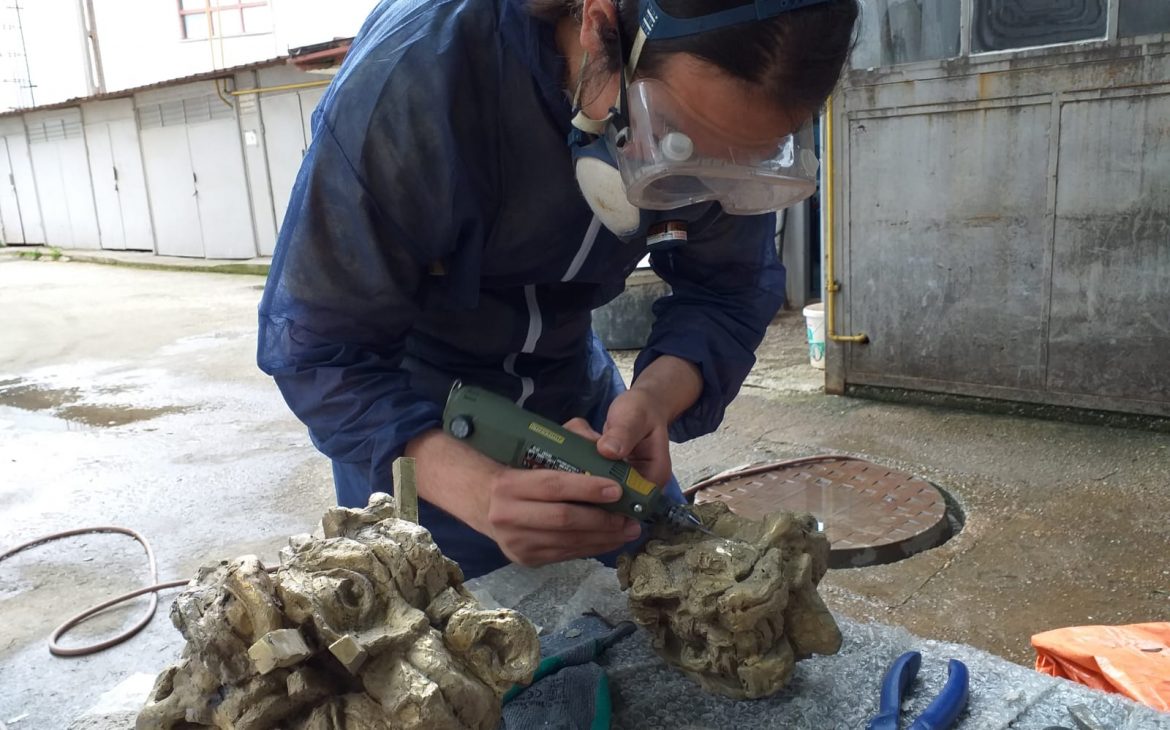
When do you know you have finished the work?
Making a sculpture means a whole process of thinking, dreams, work, ideas, corrections, and additions, I work from my creative breath. When I stop adding and rectifying and starting the completion process I know that the work is finished. At the same time, I feel that the work in question requires certain changes with time, but all those improvements I apply only to new work.
Very often when entering a contemporary art gallery, the audience is faced with the famous question is this art?; Why do you think art today is a challenge for the viewer?
The public’s attitude towards the exhibited art object is a sophisticated and important relationship, being a way to participate in something important and pleasant, but now the trend is a little different, the audience is focused on capturing the collective emotions rather than on what the subject of the work looked like. The artist must convince the public to like or criticize his work and then we can say that that work is an art.
Finally, we must understand that the nature of art is that everyone understands it differently, and can be a challenge for the viewer. He often criticizes the artwork according to the artist’s image. Challenges can be the result of the age, culture, and educational baggage of the viewer. And last but not least, the social and political situation can also provoke and influence the public in one way or another.
What do you think is the role of art and its purpose in a changing contemporary society?
I would answer you with a question….what would life be without art? Art connects the eternity of mankind … that anoints our soul and brings positive meanings to existence.
What are the perspectives for the future?
I would like to create bigger work because I have requests for such works. I want to explore new steel sculpting and welding techniques, continue the perfectionist manner with collectors, and expand my portfolio of works. I have already invested in another welding technology, which I still use today, and then I upgraded again to get something even more interesting.
Another plan for the future would be to focus a little bit on the international art scene, on the exhibitions from outside. I am also focused on the people us, but I am thinking of a new market, getting to know the public in the West, and observing how they relate to my creation. I am optimistic because I have been noticed and I have already had a few collaborations and requests from abroad.
